Joy Piedmont: “Make sure you do and see the things that interest you”
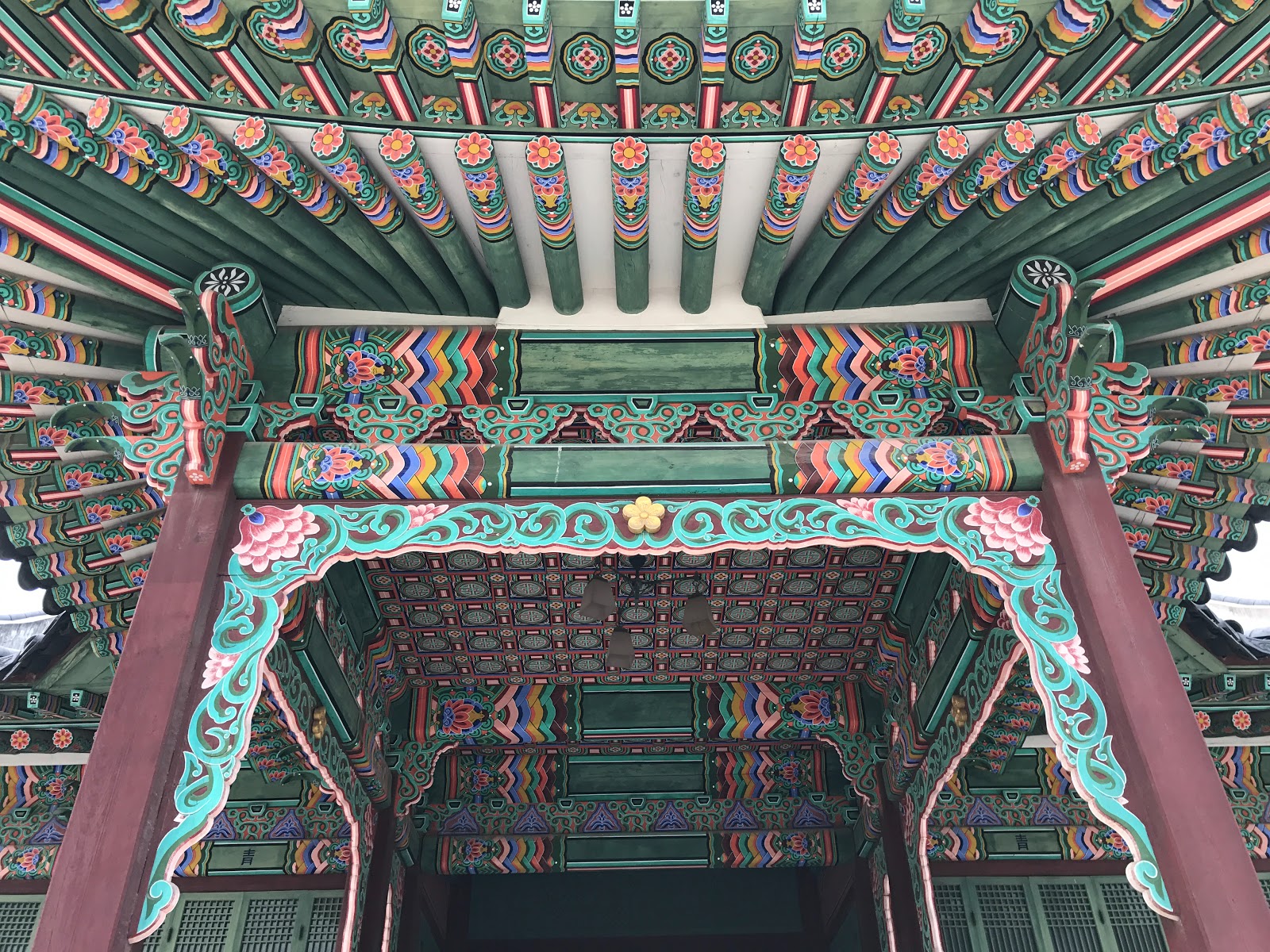
I was born in Seoul, Korea but until last month I had not been there since I was adopted as a four-month-old baby. I have wanted to visit Korea for some time now and the LREI travel grant made the trip possible. I visited Seoul, Busan, and Jeju and I loved the country so much that I know I will try to make a return trip as soon as I’m able to.
For the first five days of my trip, I stayed at Eastern Social Welfare Society in Seoul, the orphanage that arranged my adoption. After I was born in a nearby clinic, ESWS placed me in foster care and worked with the adoption agency in the U.S. that united me with my family. ESWS is incredibly supportive of adult adoptees returning to Korea for the first time since their adoption. I stayed in the ESWS guesthouse, which is a floor at the top of the orphanage reserved for families who are adopting a child, or adult adoptees like me. They also provide access to medical records and assistance with birth searches. Although I wasn’t interested in doing a birth search, I was curious about the foster family who took care of me before I came to the U.S. Unfortunately, they weren’t able to find any contact information for them but I had a great conversation with one of the social workers about their work and the changes in Korean adoption since I was born. Having a “homebase” in Seoul helped me feel safe and supported while giving me room to have my own experience. When I moved on to Busan and Jeju, I felt more at ease in a way that I don’t think I could have without having spent those first days at ESWS.
My main goal in visiting Korea was to experience the culture, but that’s a very broad and vague goal for a trip that has a lot of emotional significance. It would have been easy to become weighed down by that and the expectations of others for what my trip should be. However, early on in the planning stages, a social worker at my US adoption agency gave me great advice when I reached out for assistance. She said, “there are only so many temples you can see; make sure you do and see the things that interest you, not the things you think you’re supposed to do.” This was the best advice I could have received. It relieved the sense that there was a certain kind of trip that I, as an adult returning for the first time, had to do.
My only problem then, was a positive one: there were so many options for things to do and see; things that could only be experienced in Korea. How could I make those decisions with a limited schedule? I was paralyzed by the tyranny of choice, and learning to let go of that anxiety was hard.
Every day I reminded myself that whatever I did that day was what I was supposed to be doing. I let myself turn down interesting looking streets on the way to my planned destination, I allowed myself to flee from places I thought would be fun (like the famous fish market that made me rethink my decision to stop being a vegetarian), and I tried not to stress too much about the fact that communication was hard since I only know how to say “hello” and “thank you” in Korean. This was never going to be easy, and accepting–even learning to embrace that–was a rewarding lesson to learn.
With that in mind, I did a lot of neighborhood wandering, visited a lot of museums, and hiked the beautiful coastline and mountains. My journal went everywhere with me and I took a ton of notes and lots of photos. Even though there was no way to do everything I wanted to do, I left feeling very satisfied and determined to return (preferably after I acquire some conversational skills).
Some memorable places and moments from my trip:
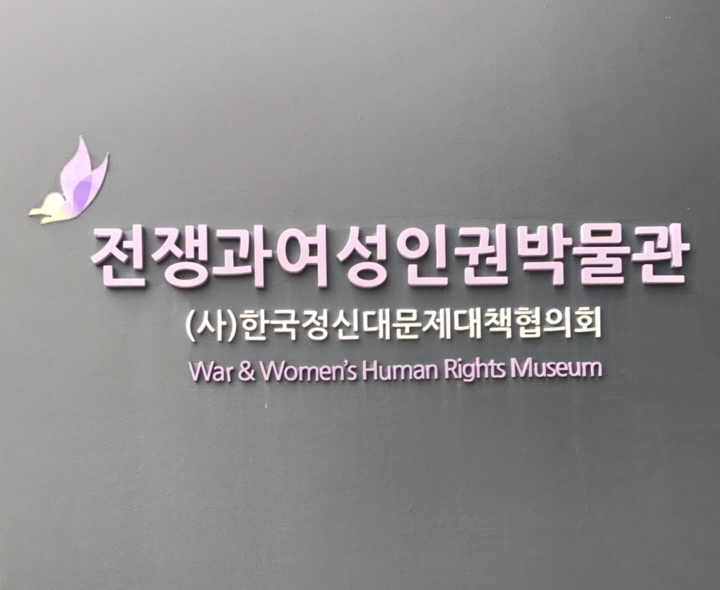
Seoul: By far the most powerful experience I’ve ever had in a museum, the War & Women’s Human Rights Museum in Seoul tells the story of ‘comfort women’ who were forced into sexual slavery by Japanese soldiers during World War II. They were often kidnapped and kept in camps that were sanctioned by the Japanese government. For decades, the surviving halmoni (the comfort women are affectionately called, “grandmother”) have fought for justice for themselves and women all over the world who have been victims of sexual violence during war.
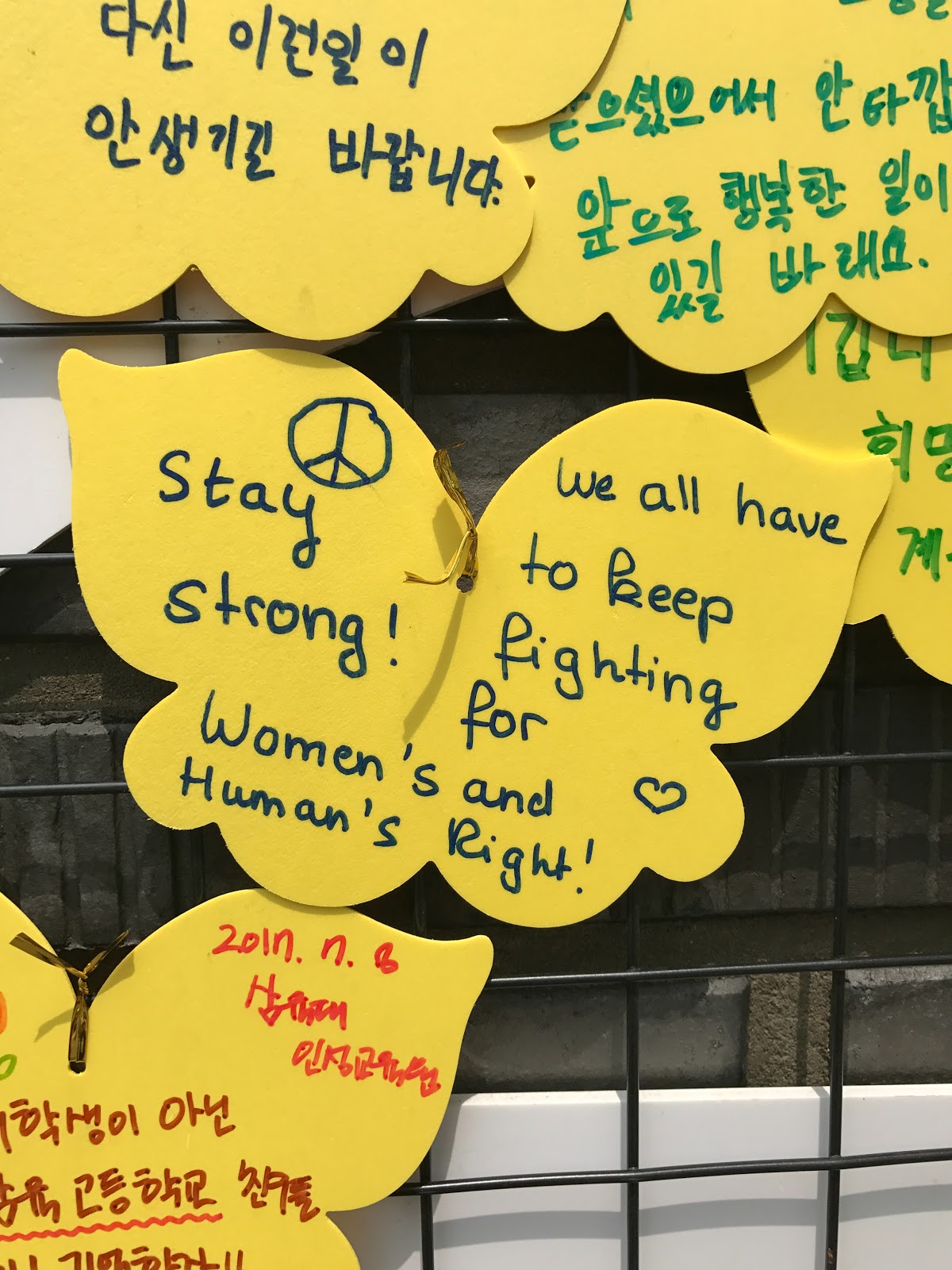
Seoul: Visitors are invited to write messages of support on butterflies messages that hang in and outside the museum.
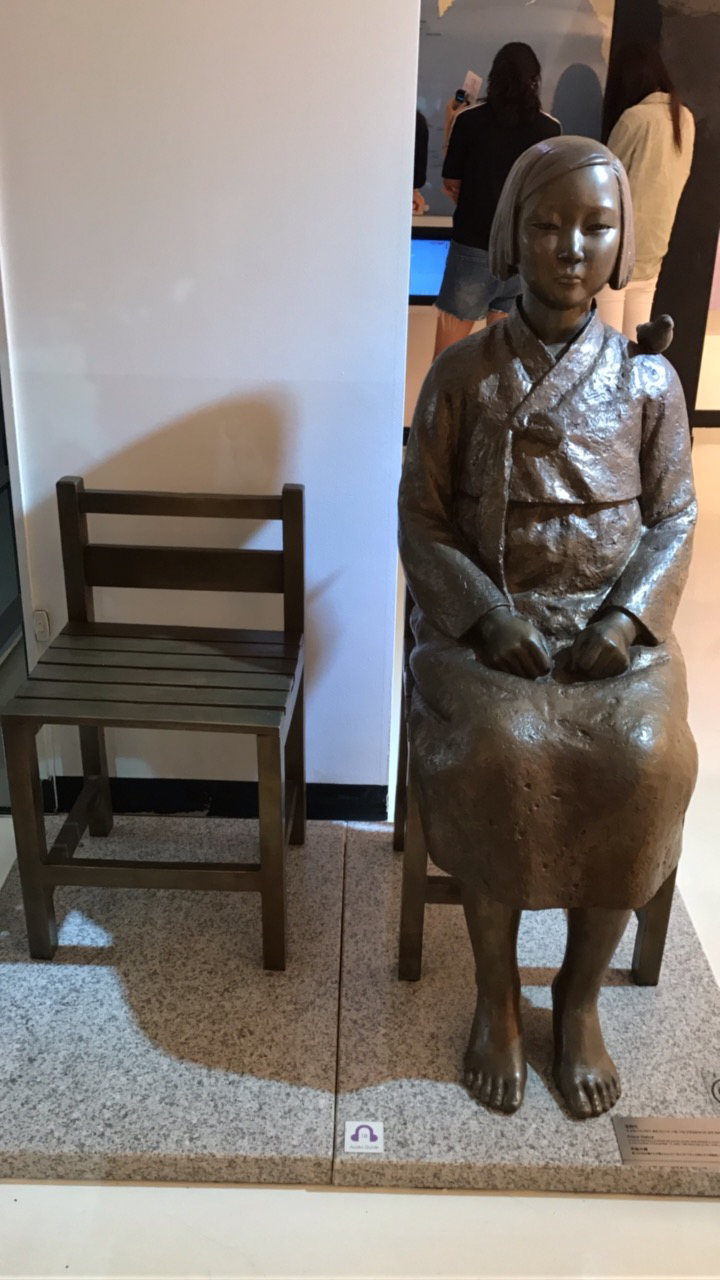
Seoul: Every Wednesday since 1992, women protest outside the Japanese embassy. This is a replica of a statue that was erected outside of the Japanese embassy to commemorate the 1,000 consecutive Wednesday protest.
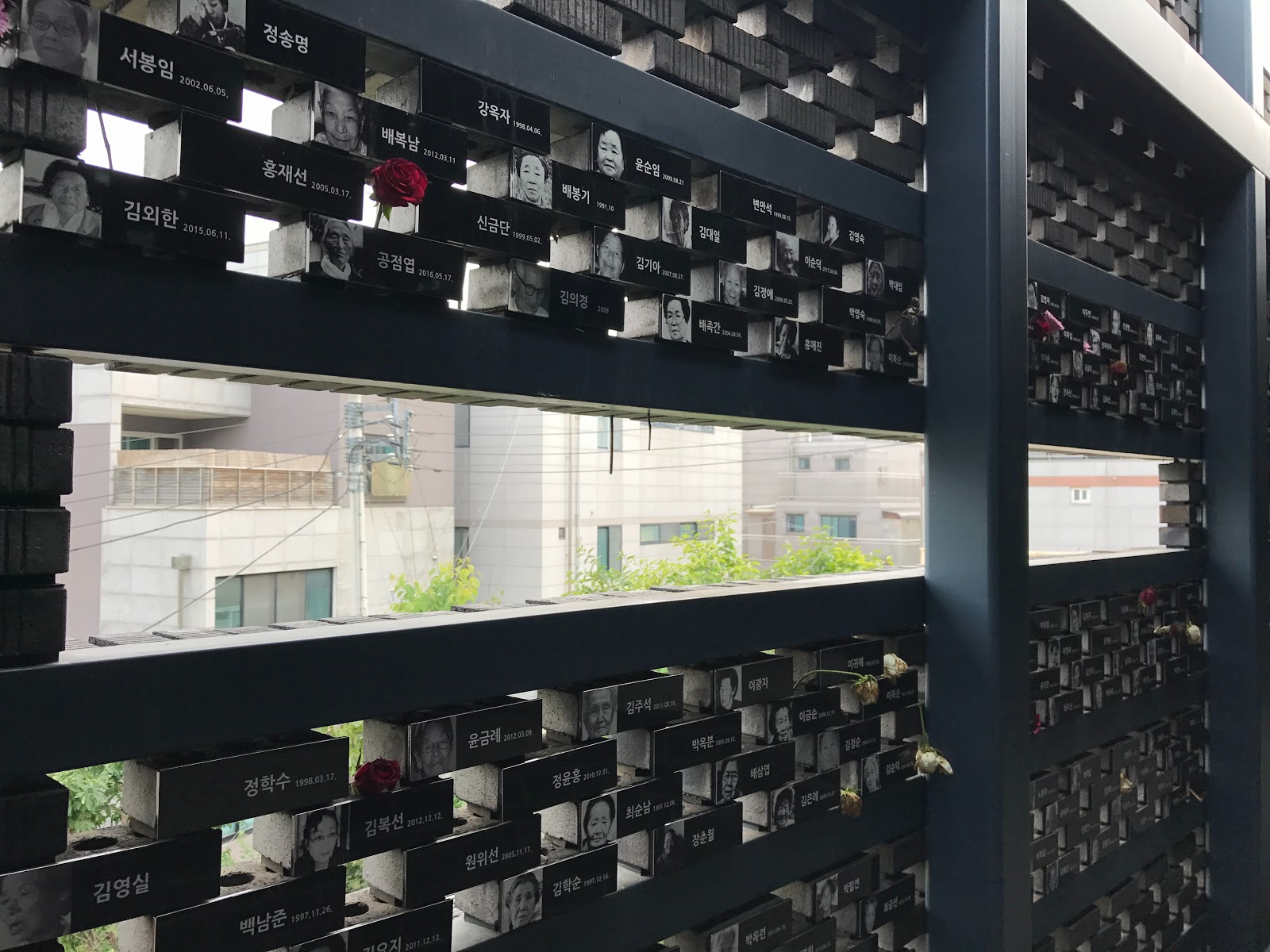
Seoul: Wall dedicated to the comfort women. The museum leaves a vase of flowers by the door so visitors can leave one on brick of their choosing.

Seoul: An archway in Changdeokgung Palace
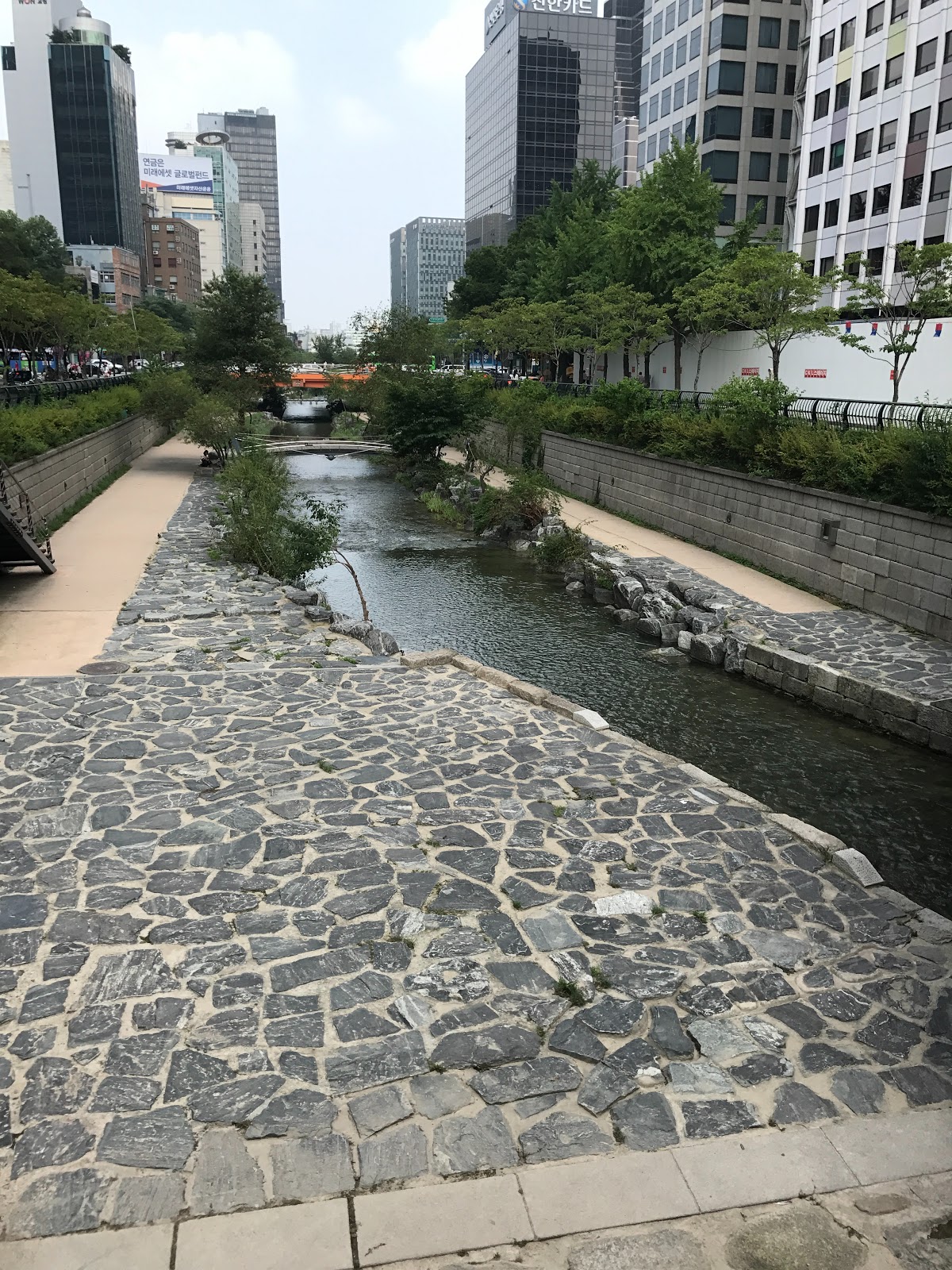
Seoul: Cheonggyecheon stream and plaza
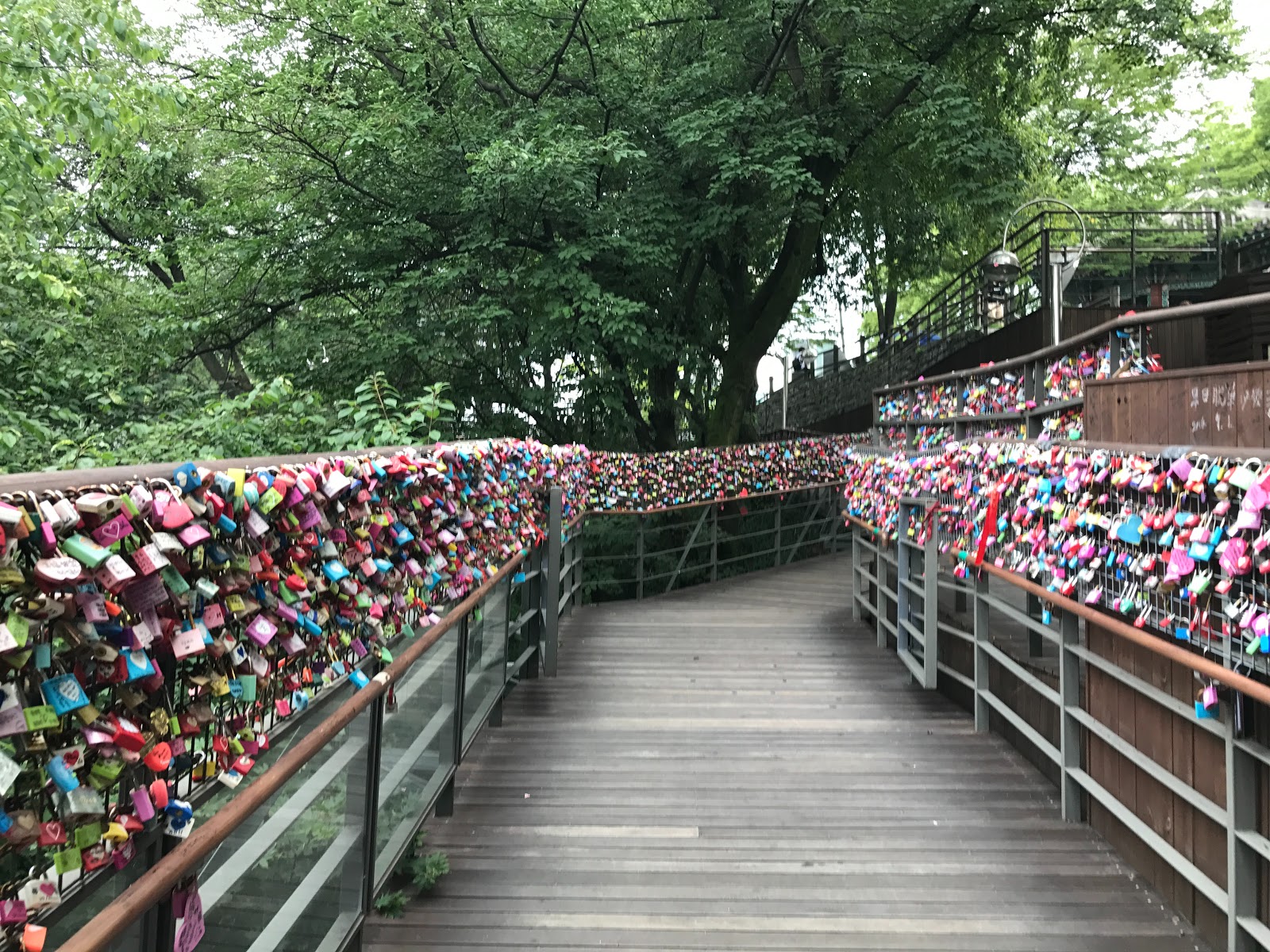
Seoul: Locks line the walkway to the N Seoul Tower at the peak of Mount Namsan.
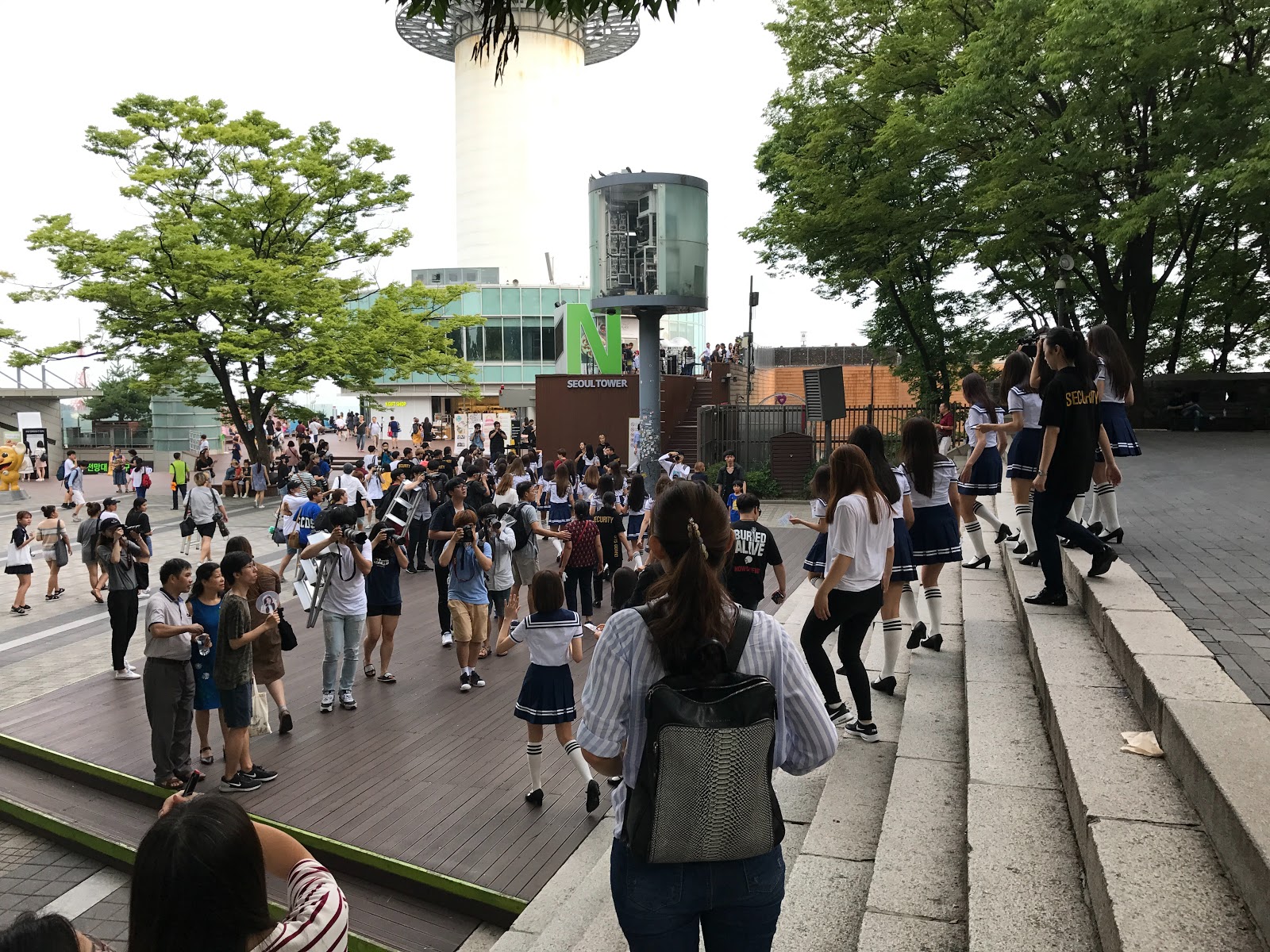
Seoul: A K-Pop girl group was followed by a huge entourage of paparazzi while I was at N Seoul Tower.
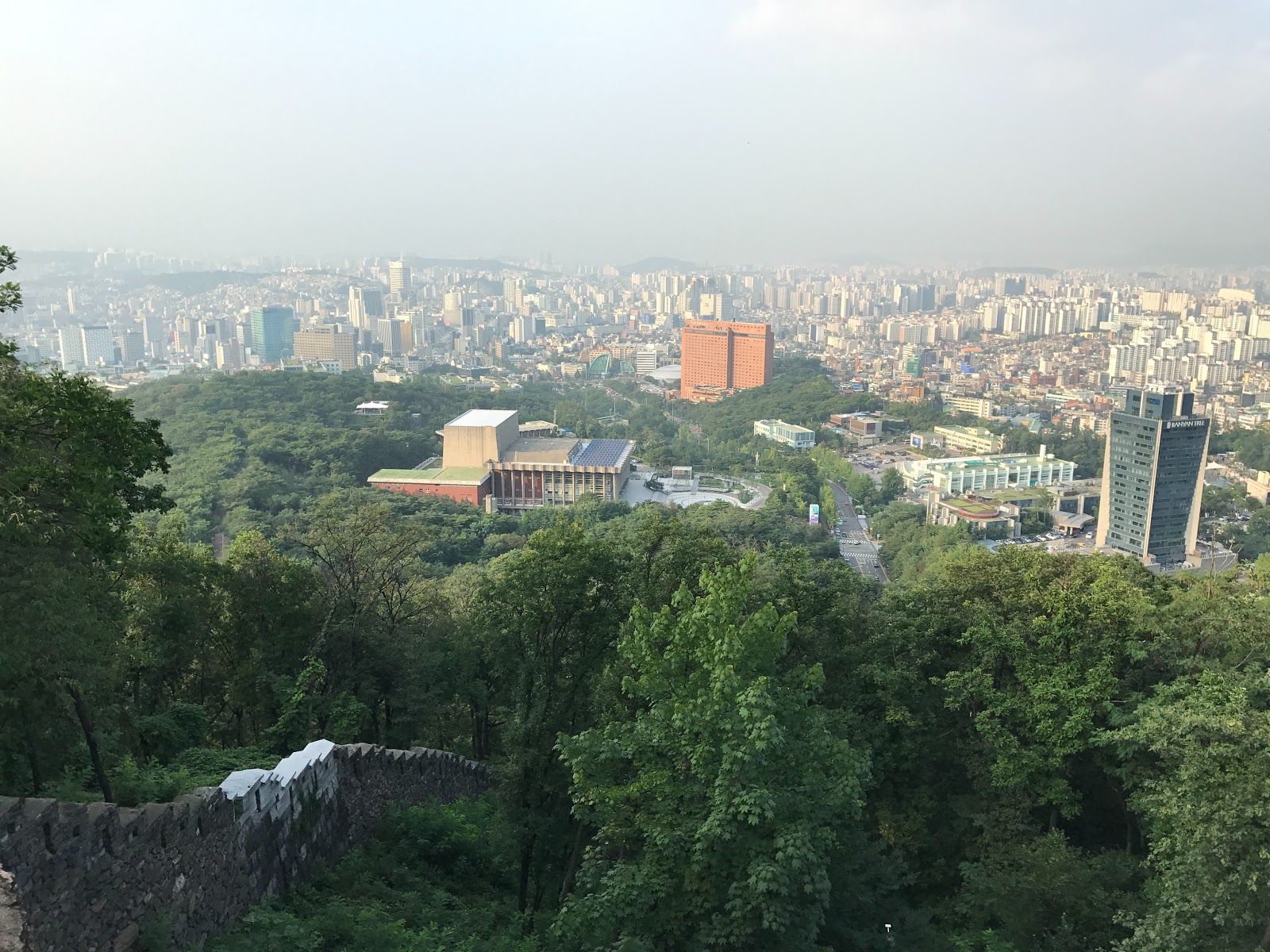
Seoul: The view of the National Theater of Korea from Mount Namsan. After I took this photo, I hiked down the mountain towards the theater where I saw the international touring production of Cats.
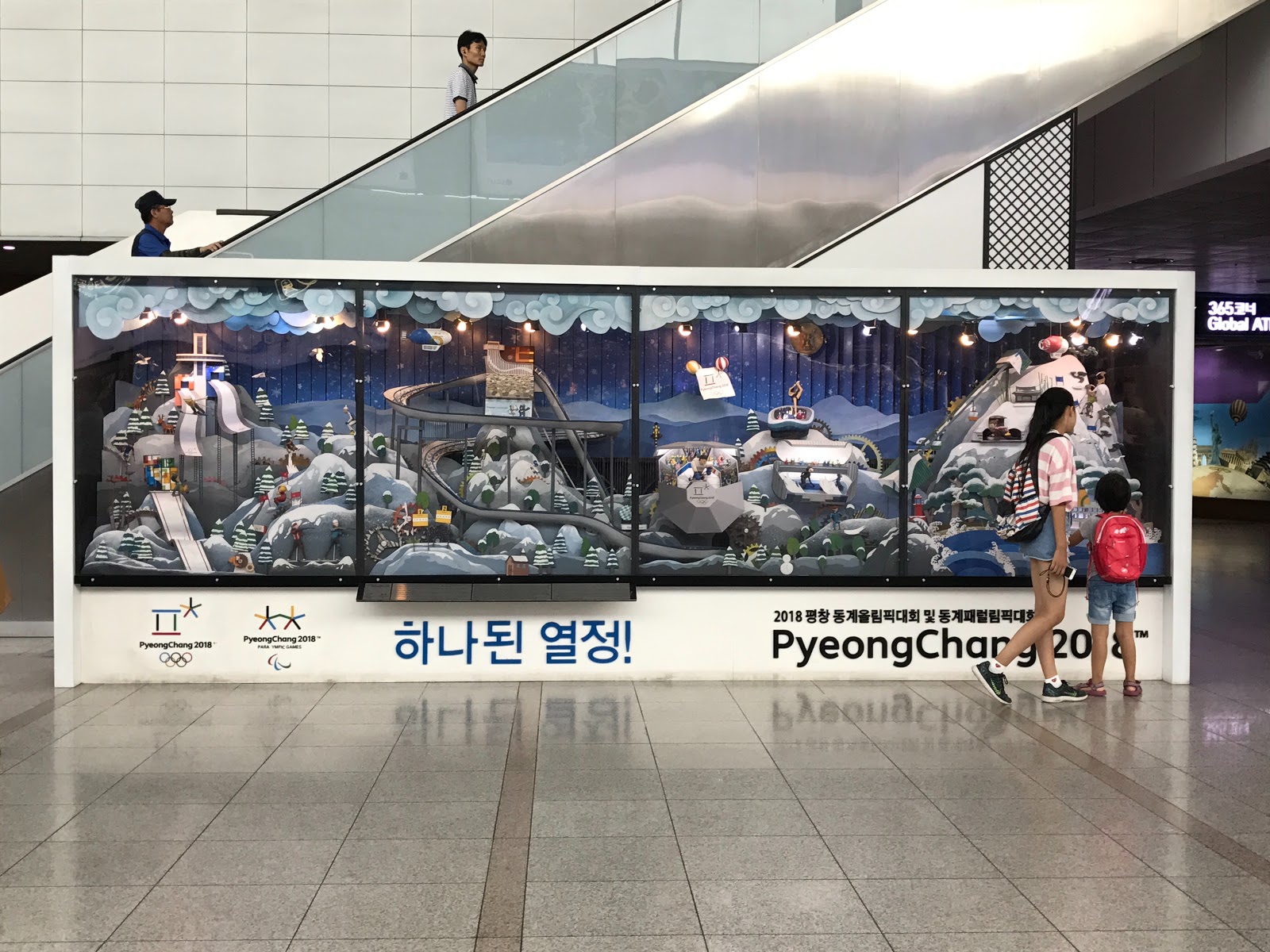
The Seoul train station was the only place I saw any mention of the upcoming Olympic games in PyeongChang. The automatons in this display were really cool.
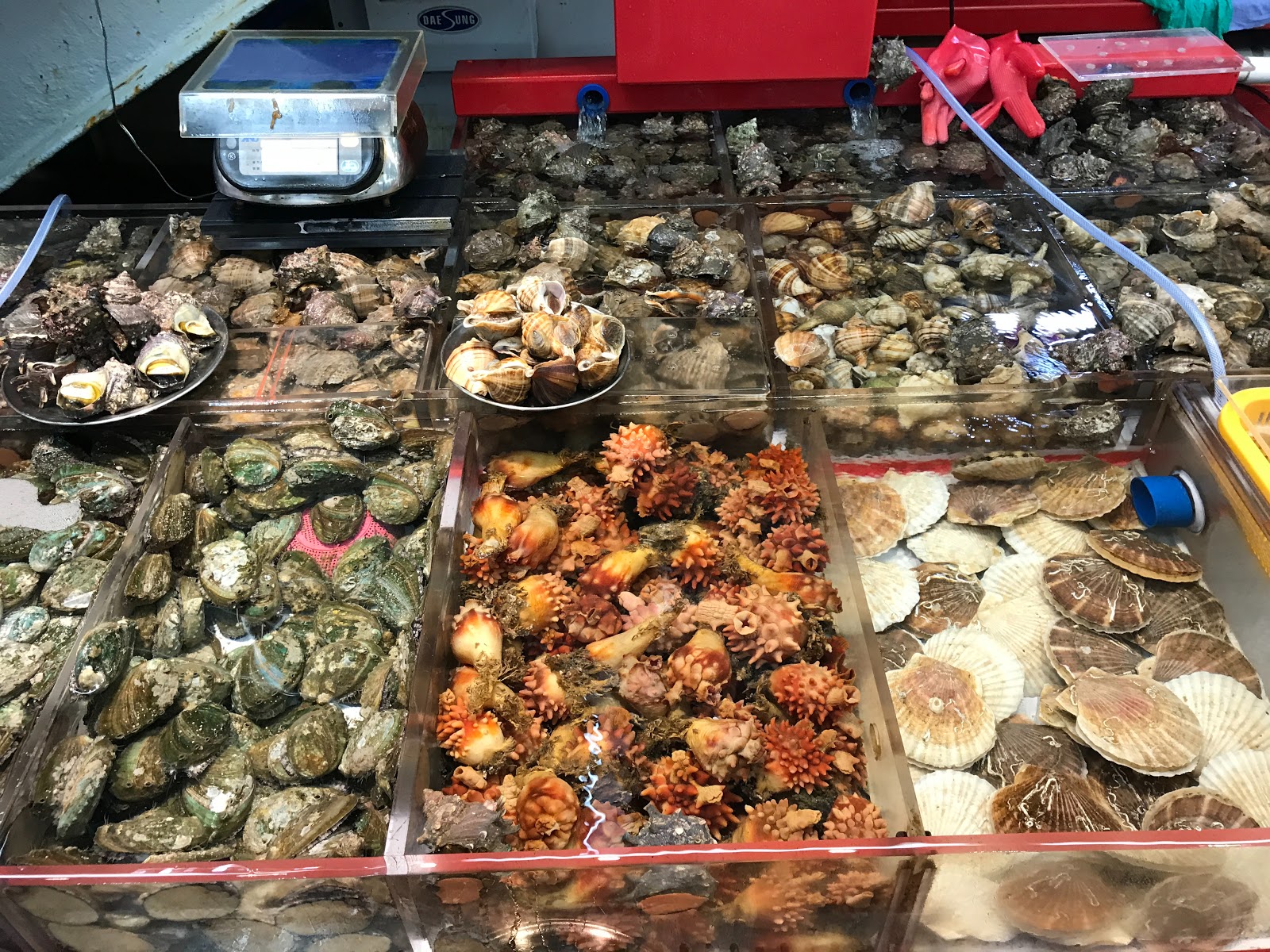
Busan: Molluscs at the Jagalchi fish market. This is a famous spot for seafood lovers. It nearly turned me back into a vegetarian (turns out, I really can’t see food alive if I want to eat it).
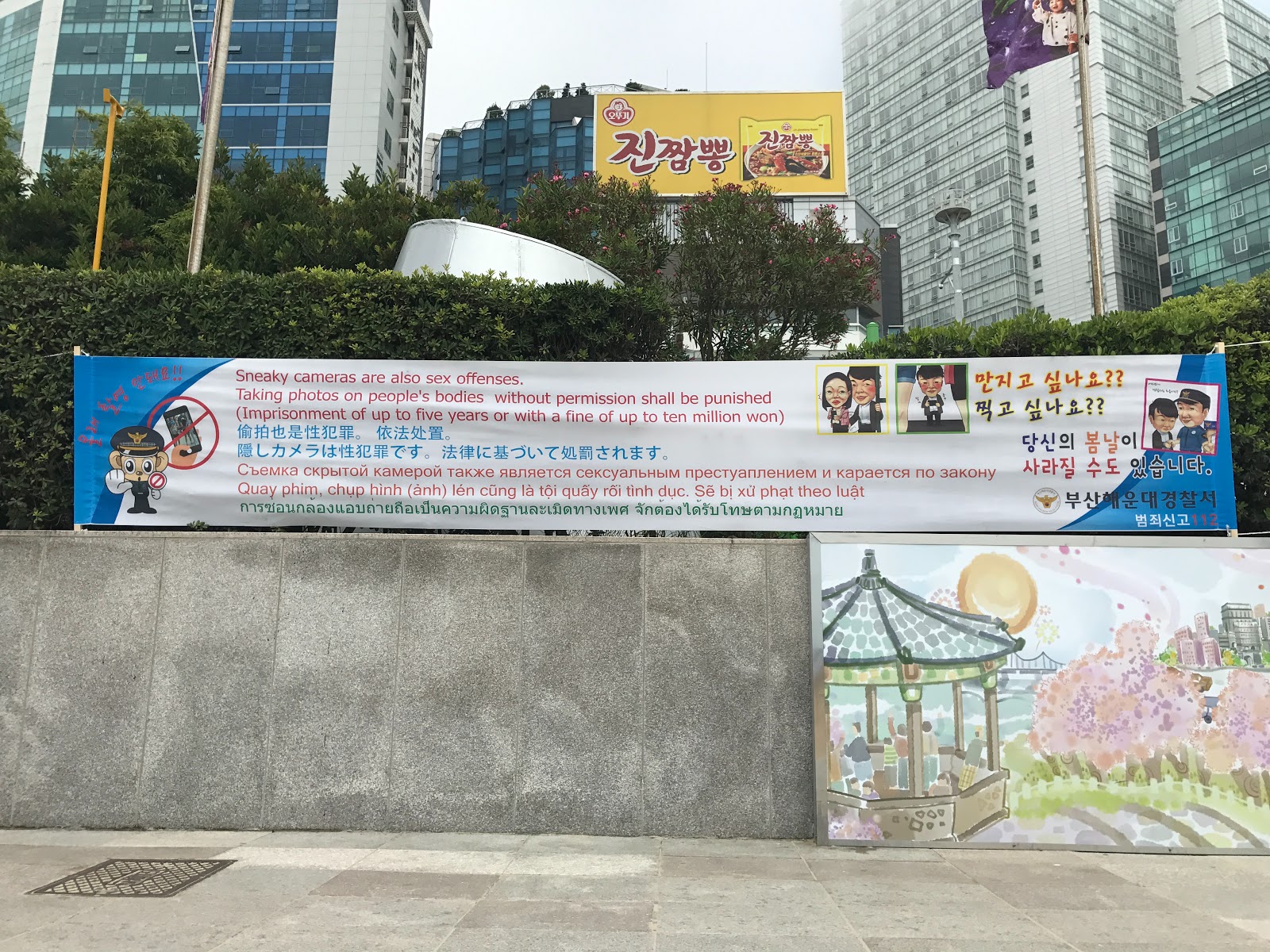
Busan: At Haeundae beach a huge sign at the beach entrance warns visitors against harassment and taking photos of others without their permission.
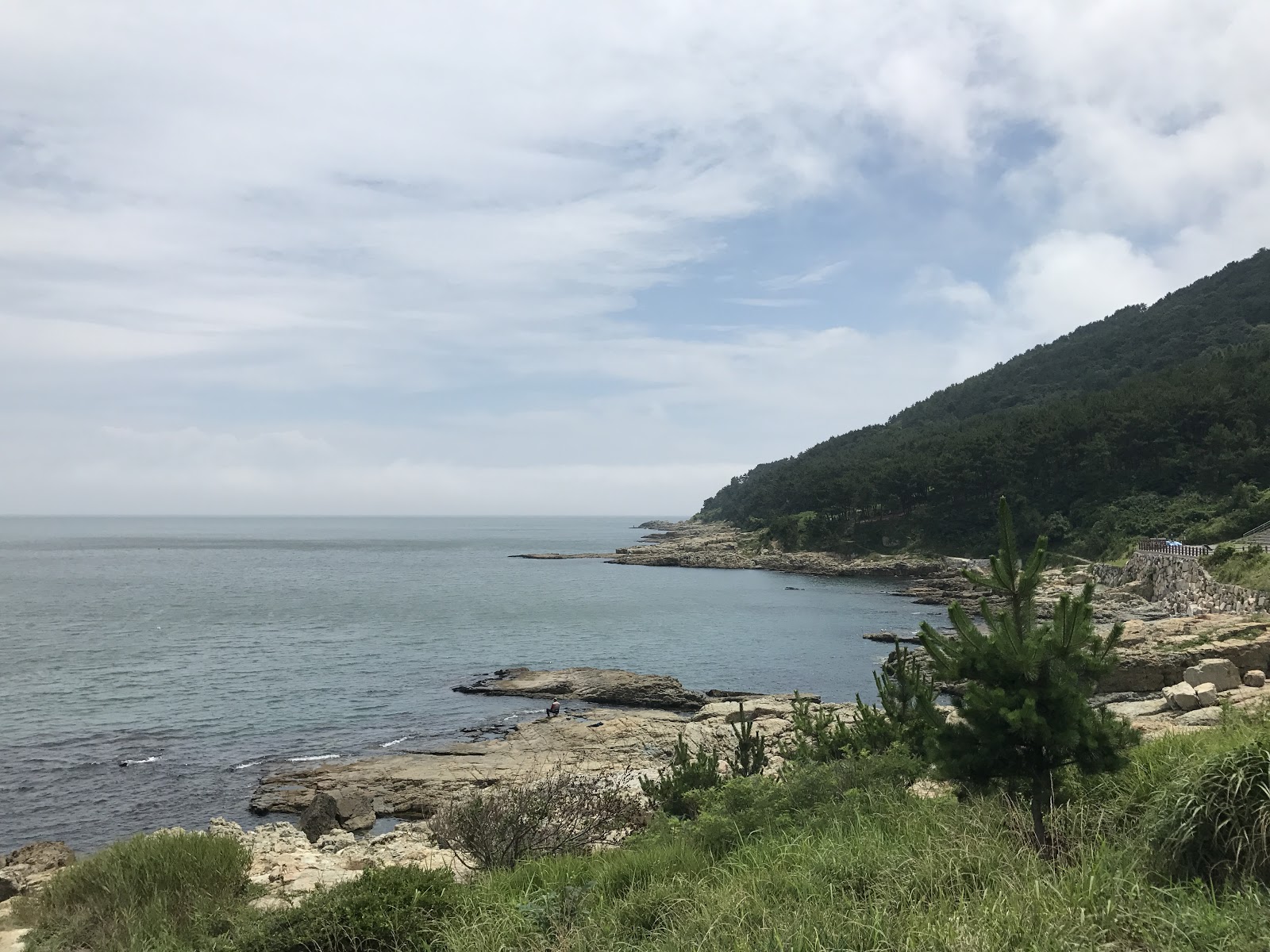
Busan: The coastal hike at Igidae Park, my favorite hike of the trip.
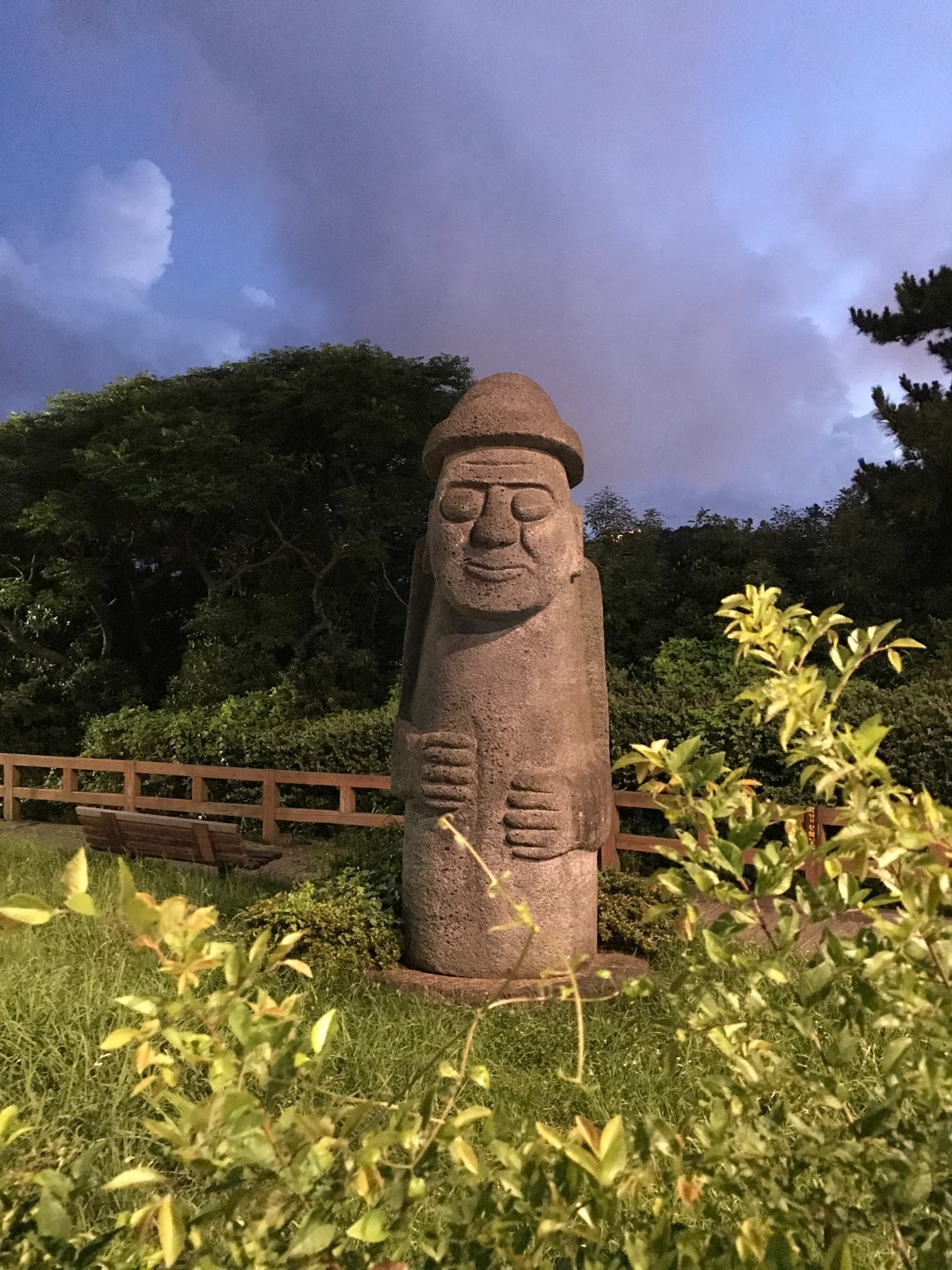
Jeju: The dolharubang can be found all over Jeju. They are symbols of protection and fertility.
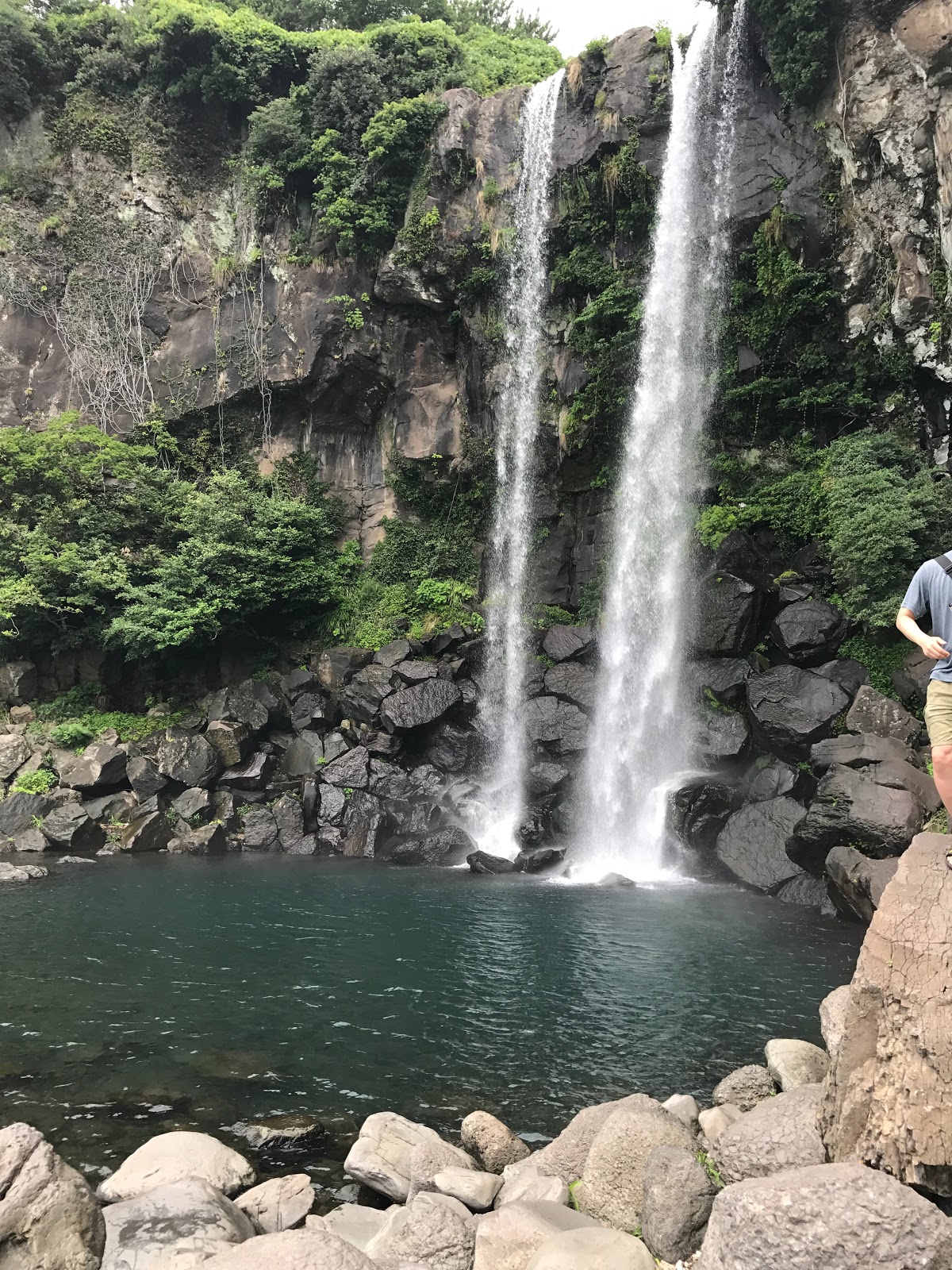
Jeju: Jeongbang waterfall, the only waterfall in Jeju that flows into the sea.
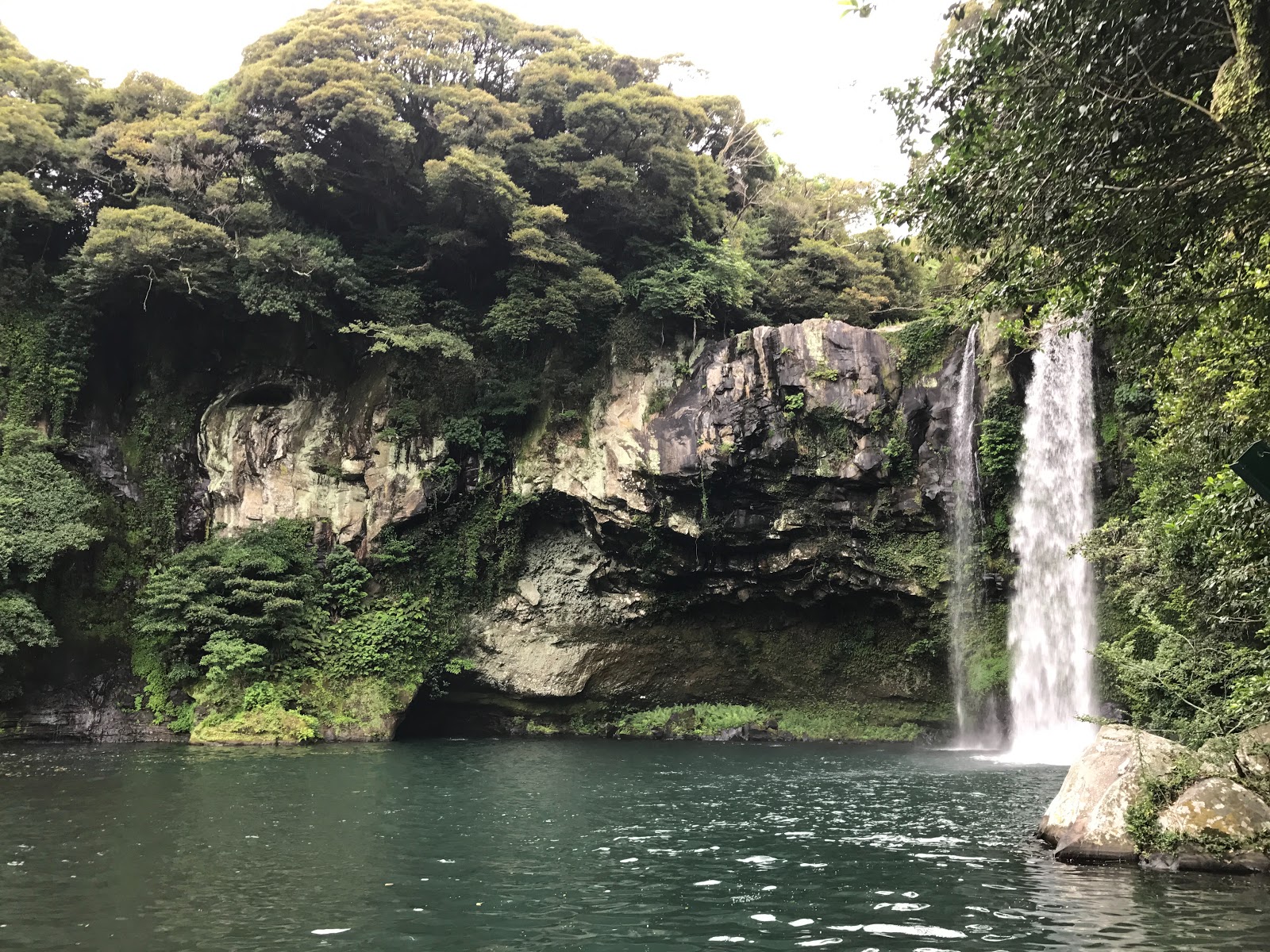
Jeju: Cheonjiyeon waterfall. There’s so much natural beauty in Jeju.
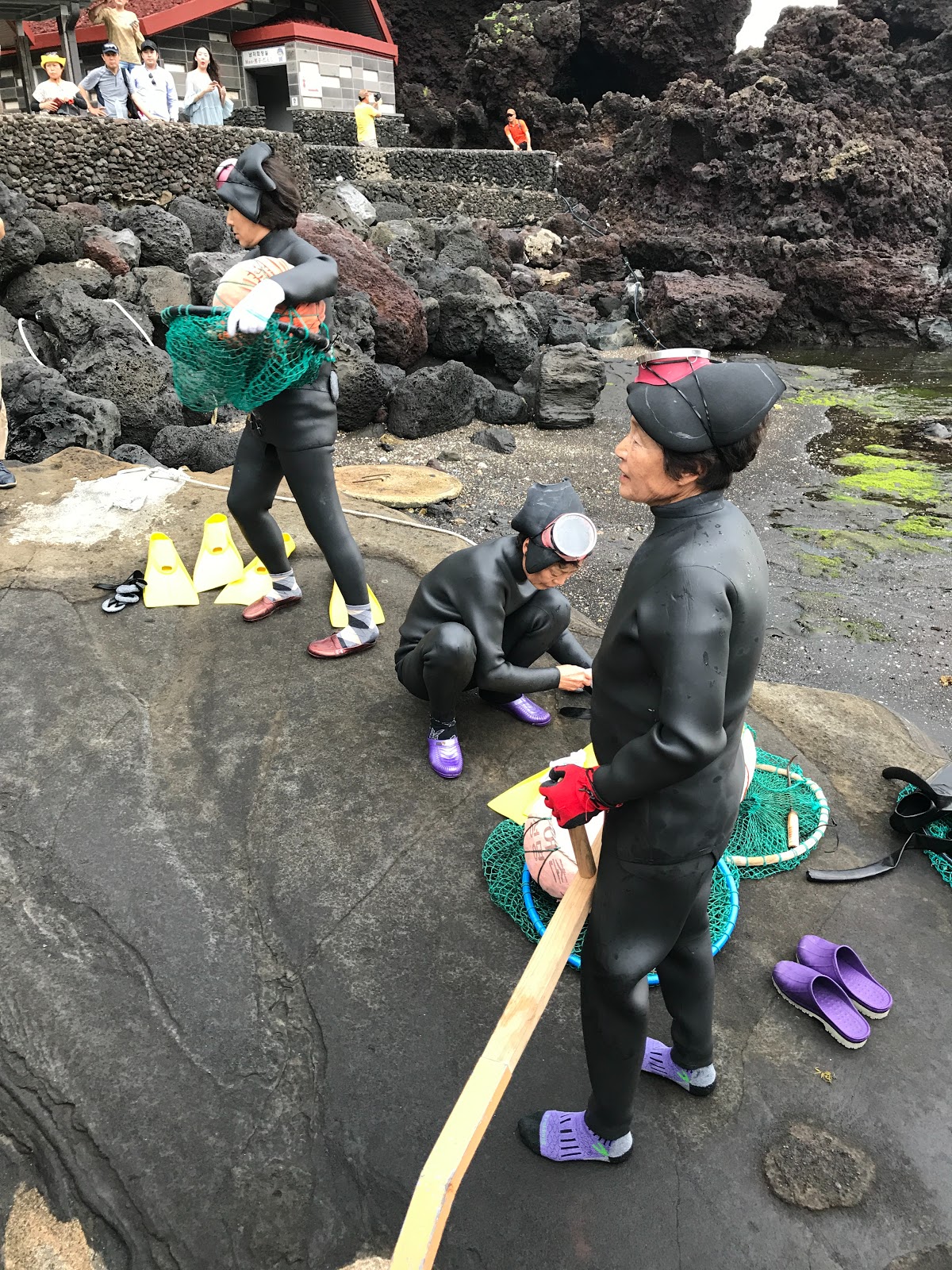
Jeju: The Haenyeo are famous female divers, the oldest of whom is in her 80s. Most haenyeo are over the age of 50 and they are highly valued as an important part of Jeju heritage. Jeju economy and culture once revolved around these women who labored all day while men stayed home.
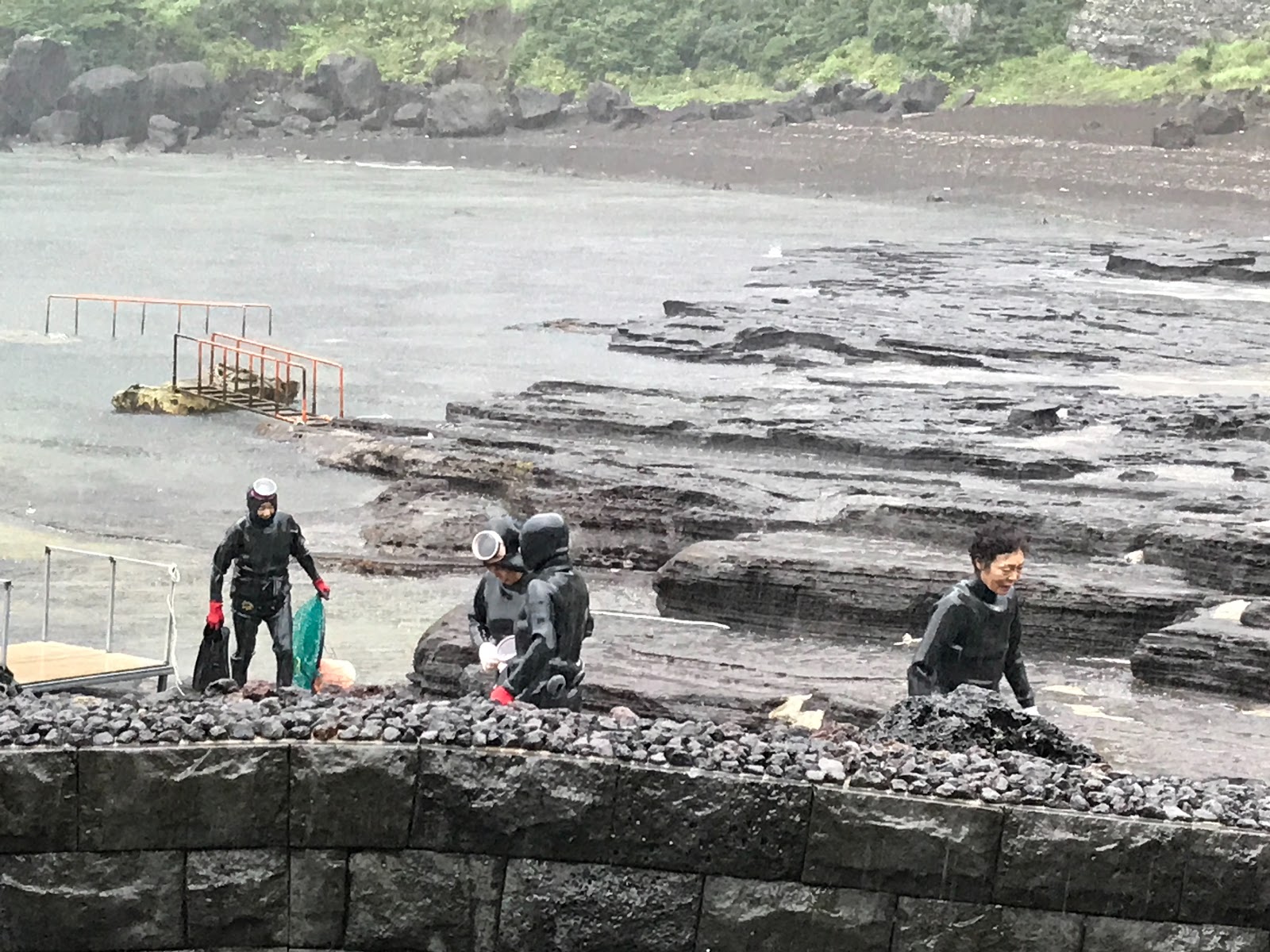
Jeju: The haenyeo emerge from the water in a downpour.
Thanks, Joy, for this recap of your visit. Great to see Seoul through your eyes and to remember my time there. Do you think you might go back someday?
I will definitely visit again! I loved it and would like to see more of the country but I also want to revisit Seoul and Jeju. I didn’t get to do the lava tubes in Jeju because the day I was supposed to go I was caught in a downpour so the caves and volcanoes are first on my list for when I go back.